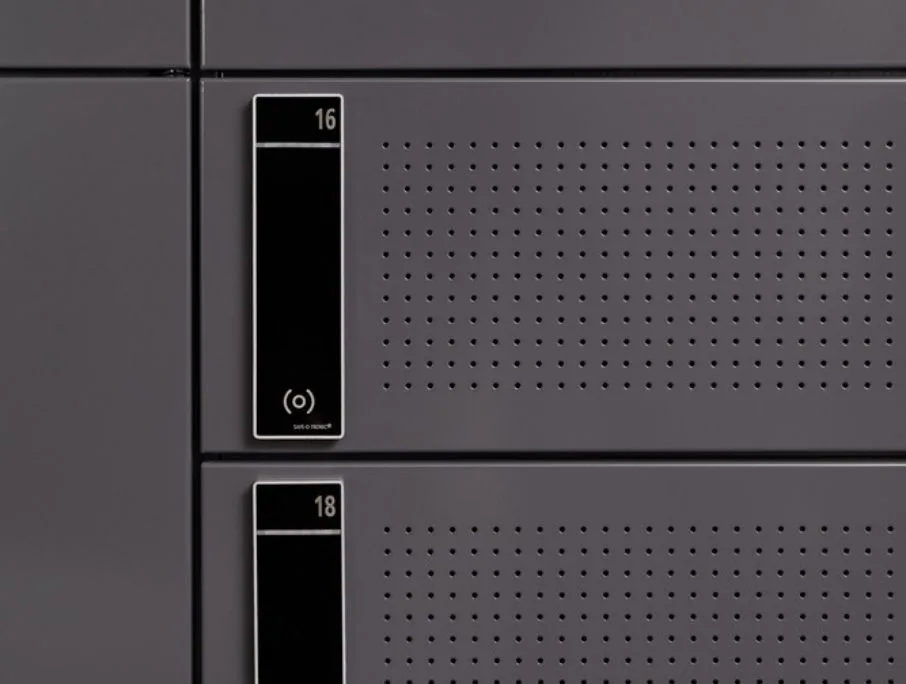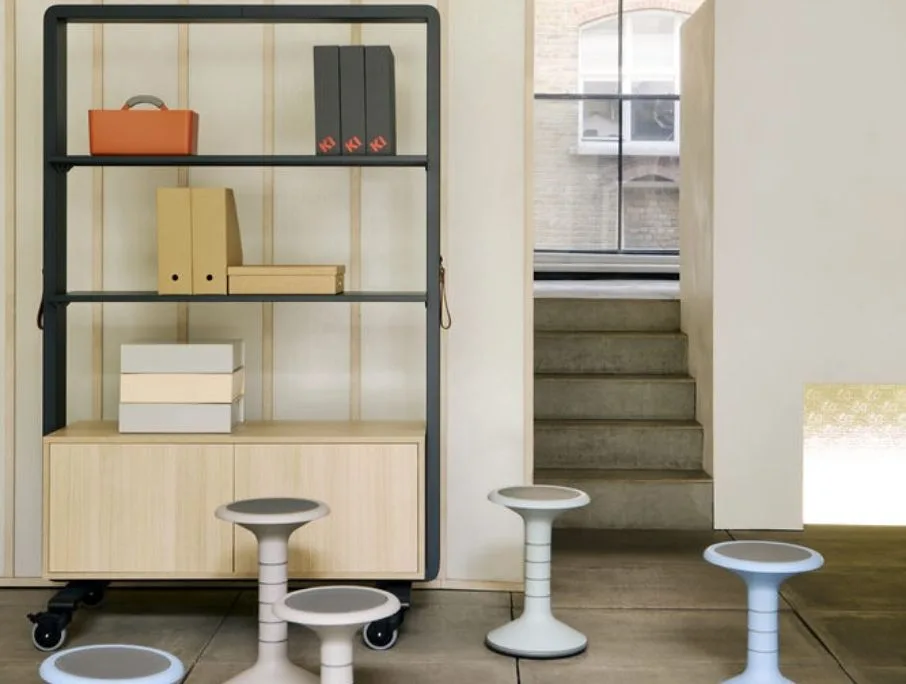Classroom Storage Ideas to Keep Your Space Organised
In today’s learning environments, flexibility and functionality are key. Gone are the days of static classroom layouts with only books and stationery to store. Now, interactivity is standard and teachers incorporate a wide variety of resources to stimulate learning.
Whether you’re designing a vibrant EYFS setting or a structured Key Stage 2 classroom, the importance of effective storage solutions can’t be overstated. Whilst settings look vastly different for students in Year 1 or Year 10, decent classroom storage and a carefully-considered layout are hugely important.
Smart classroom storage isn’t just about keeping things tidy. It plays a vital role in maximising space, encouraging independence and creating an efficient, engaging environment that benefits both students and teachers.

Why storage matters in the modern classroom
From trays of science equipment or headphones to art supplies and workbooks, a typical classroom can quickly become overwhelmed with resources. Then there are the students’ personal belongings like lunchboxes, water bottles, bags and coats.
Without well-considered classroom storage, this can lead to cluttered spaces, lost learning time and even safety hazards.
The right storage solutions help to:
- Keep resources accessible and visible
- Encourage pupil independence and responsibility
- Support clear zoning within the classroom
- Facilitate quick and easy transitions between activities
- Maintain a calm, organised atmosphere that encourages focus and engagement.
If your learning space is organised, with everything in its rightful place, it’s a good starting point. When your classroom flows and clutter’s kept to a minimum, classroom management becomes easier. Students can get involved in starting or clearing away activities when they know where everything belongs.
What’s the best way to organise a classroom?

Whether you’re working in an Early Years setting or a senior school, it’s useful to incorporate flexibility in your classroom design. Teaching methods tend to vary from small group work to whole class engagement; practical activities to teacher-led discussion.
Try these 8 ideas for better classroom management with clever storage solutions.
1. Multi-functional storage units for flexible layouts
Multi-purpose furniture is an ideal way to make the most of limited space. Storage units that double as room dividers, display boards or seating help define zones while keeping essentials close at hand.
For example, low-level storage units with integrated seating can create a quiet reading nook or a small guided group area. Bookcases can be used to distinguish between a creative zone and the teacher’s desk space.
Instead of heavy duty filing cabinets and bookcases, choose lightweight storage solutions on wheels that can be moved easily. Mobile options allow staff to reconfigure the space to suit the day’s activities, supporting more flexible, learner-led environments.
2. Clear storage for visibility and independence
Make it easy for you and your students to find what’s needed. You don’t want to waste time opening caddies or storage boxes to check whether they contain workbooks, art supplies or maths resources. Visible storage means less time spent searching for materials, leaving more time to focus on teaching and learning.
Clear-fronted tray storage and labelled compartments are excellent tools for fostering independence among younger pupils in particular. When children can see and identify what they need, they’re more likely to take responsibility for tidying up after themselves. This simple habit builds important life skills and saves teacher time too.
3. Vertical wall storage to keep the floor clear
When floor space is at a premium, vertical storage becomes essential. Utilise your wall space. Modular, adjustable shelving makes the most of unused wall space while allowing for easy customisation. This is particularly useful in classrooms where resources change frequently across the year.
Wall-mounted shelves or pegboards can also provide a home for items like whiteboards, scissors or headphones. That prevents them cluttering up desk spaces.
4. Zone-based storage for different learning activities
Smart storage isn’t just practical, it can aid learning goals. Creating defined zones within the classroom (such as writing, reading, and creative areas) with dedicated storage nearby can streamline transitions and reinforce curriculum routines. Think segregated art storage, book bins, counting aids or specialist equipment for example.
For EYFS settings in particular, open-fronted storage in each zone allows children to self-select resources which promotes exploration and independent learning. You may have storage bins containing dress-up equipment for role-play activities, another for construction toys and more for building blocks.
5. Hideaway storage for occasional resources
You don’t need every resource on display constantly. Some are only needed whilst focus is on a particular curriculum topic. Others may be seasonal activities. Nobody needs Christmas decorations on display year round!
Integrating closed storage units for seasonal or occasional-use materials helps reduce visual clutter and keep the environment calm and focused. This also helps you to rotate resources more easily, keeping learning fresh and stimulating.
6. Personal storage to promote responsibility
What to do with kids’ coats, PE kit, school bags and lunch boxes? Introducing individual cubbies, drawers or lockers helps instil ownership and responsibility among pupils. It also helps reduce the likelihood of lost belongings. Kids enjoy having their personal space within the shared classroom environment.
It’s also important for staff to have their own, secure space for teacher supplies. Keep your supply of whiteboard pens and dry erase makers out of reach of others!
7. Flexible seating solutions to create space
Throughout the day, you need to use your classroom space in different ways. Folding or stackable chairs make it easy to make more room. Move all the chairs to the outer edge of the classroom to create an open space for group activities and to encourage movement. Maybe you need to reconfigure your seating arrangements for small group work or an interactive task. Lightweight, portable chairs make that easier, as well as safer for your students.
8. Colour code for easy separation
A quick way to categorise storage is through your use of colour. It could be as simple as using different coloured storage boxes for different supplies. You could apply colour coded labels to storage caddies, drawers or units to enable quick identification.
Lockers in different, yet complementary, tones aren’t just attractive. They’re practical storage solutions for various resources or students’ personal belongings. Or perhaps different coloured lockers, chairs or desks could be used for each year group.
Colour code your teacher supplies too. Using specific colours on file folders or binders will help you to easily distinguish which contains lesson plans, marking, academic planners or admin.
What are some creative storage solutions for small classroom spaces?
These are a few fun yet effective hacks for creative classroom storage ideas. They’re tried and tested by teachers too!
Tech container: Instead of a costly charging cabinet, you could try a more DIY version. Use a drying rack to line up iPads (or individual whiteboards or chalkboards) when they’re not in use. A similar, sturdy option, can make decent laptop storage too.
Movable storage: Bookcases aren’t only for book storage. If they’re on wheels, they can be used to create a cosy classroom library or reading zone as required. They serve as ideal space space dividers too.
Rolling carts: Using a trolley for art supplies means you can roll it out when needed. It also prevents manual handling or lifting of heavy storage boxes.
Headphone hub: Wall-hanging pockets (often used for shoes) or a series of hooks can be used to house headphones. It’s a clever way to prevent a tangle of wires and cans.
Hanging file dividers: Traditional filing cabinet inserts aren’t only for folders. Think creatively! You could use them for separate coloured paper storage, themed wall displays or signage – each colour or theme has a designated section.
Ready to transform your learning spaces?
Effective classroom storage is about more than tidiness. It’s a strategic tool that supports classroom management, improves accessibility and enhances the overall learning experience – for students and staff alike. By investing in storage solutions designed with pupils and their learning in mind, you can create environments that are calm, inviting, and ready for the dynamic nature of teaching and learning.
Explore our full range of classroom storage solutions, designed to suit every school year group, curriculum style and classroom layout. From EYFS to Year 12 and beyond, we’ll help you create smart, clutter-free spaces where learning can thrive.
Find out why schools and colleges across the country choose our products to enhance their learning environments. Our projects explain how KI furniture has been the ideal solution for many educational institutions.
